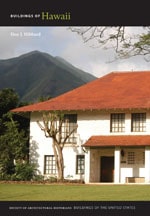The oldest historic district in Hawaii, Lahaina was declared a National Historic Landmark in 1966, primarily for its associations with the period between 1819 and 1843 when the town discontinuously served as the capital of Hawaii and the overlapping period from 1830 to 1860 when it was a major port for the Pacific whaling industry. The area had been a seat of power for the island of Maui since at least the sixteenth century and it maintained this role throughout the nineteenth. In addition to serving as a political and economic center, Lahaina became a Christian religious and educational hub when the Reverends William Richards and Charles Stewart and their wives, part of the second company of missionaries to arrive in Hawaii, were escorted to Maui by Keopuolani to establish a mission station here in 1823. Eight years later, the missionaries opened Lahainaluna High School on the slopes overlooking the town. Lahainaluna continues today, the oldest school west of the Rockies still in operation.
Considering that in 1846 Lahaina boasted a population of 3,000 and 59 stone or wooden buildings and 882 thatched structures, not much survives from that time. However, compared with the remainder of the island chain, the half-dozen masonry buildings from the 1819–1860 period that still stand constitute a considerable presence. They are important landmarks in a historic district whose fabric primarily dates from the early twentieth century and later. Following the permanent removal of the capital to Honolulu in 1843 and the precipitous decline in whaling after 1862, Lahaina's economy relied upon various sugar ventures, including Pioneer Mill. Despite such enterprises, the town was described by writer Charles Warren Stoddard in Hawaiian Life, Being Lazy from Low Latitudes (1894) as “a charming, drowsy, dreamy village.” Little of that character remains today. Since the 1970s Lahaina has successfully catered to the consumer demands of visitors staying in the neighboring resort areas.
As a result of the devastating wildfires in August 2023, all of Lahaina's historic structures have been lost or have sustained severe fire damage.
Writing Credits
If SAH Archipedia has been useful to you, please consider supporting it.
SAH Archipedia tells the story of the United States through its buildings, landscapes, and cities. This freely available resource empowers the public with authoritative knowledge that deepens their understanding and appreciation of the built environment. But the Society of Architectural Historians, which created SAH Archipedia with University of Virginia Press, needs your support to maintain the high-caliber research, writing, photography, cartography, editing, design, and programming that make SAH Archipedia a trusted online resource available to all who value the history of place, heritage tourism, and learning.

